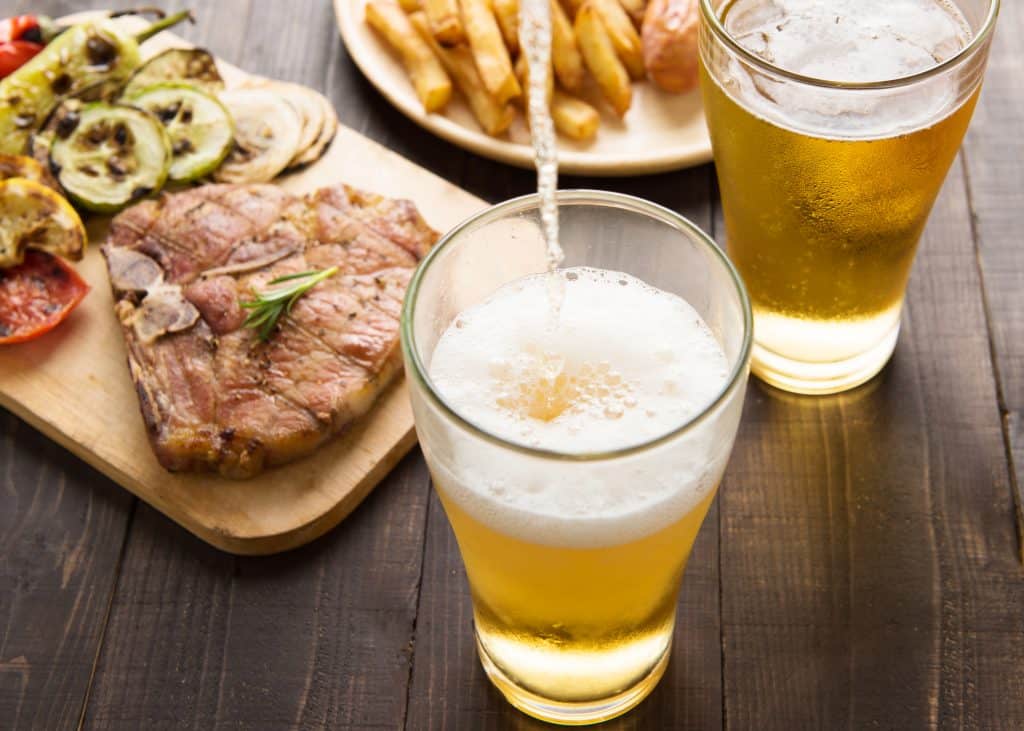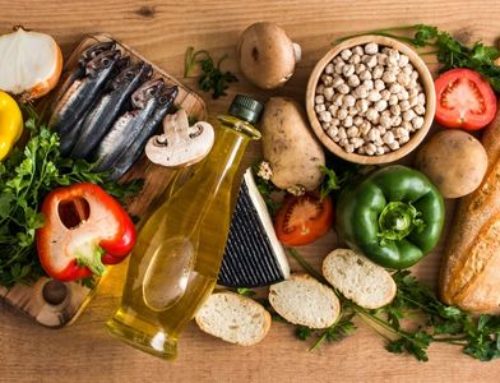
Are you growing yourself a ‘beer belly’?
It’s most likely not a term that you’d like associated with yourself; beer belly. Usually reserved for good old Uncle Barry and his large protruding belly flopped precariously over his jeans, a beer belly describes a large deposit of visceral (tummy) fat that has been steadily stored over years of regular alcohol consumption.
So are you growing yourself a beer belly? Let’s take a look at the facts.
What is alcohol?
As far as nutrition is concerned, alcohol (chemical name ethanol) is the 4th macro-nutrient joining the family of other macro-nutrients, with which you’d be well and truly familiar. They are carbohydrates, proteins and fats. The body derives energy form all four of these nutrients and we use that energy to grow, repair and move.
Ethanol is created by the metabolism of carbohydrates (in grains, fruits and vegetables) by yeast through a process called fermentation. When alcohol is distilled and concentrated it is known as spirits. Alcohol contains less energy than the equivalent amount of fat, but exceptionally more than carbohydrate and protein.
Unlike the other macronutrients, that require digestion, alcohol is absorbed directly into the blood stream by a process called simple diffusion. It acts like it has an ‘all access pass’ and pretty much goes wherever the heck it wants throughout the body. Wherever water is, alcohol can go there too. It easily slips into body cells, however, it damages cell membrane proteins as it goes. Kind of like a rock star in a hotel – allowed to do wherever they want but trashes the place.
Next, when alcohol is present in the blood stream, it continues to flash its ‘all access pass’ and jumps to the start of the queue in metabolism. Carbohydrates and fats get pushed to the back of the line as the liver prioritises alcohol metabolism above the other nutrients. The end product of alcohol metabolism (acetyl-coA – for the science nerds out there) is either used in energy production or fat storage.
Alcoholic beverages
You probably don’t need a nutrition lesson on where alcohol comes from. I’m pretty sure most of you could rattle off the main dietary sources. They are beer, wine, spirits and liqueurs served in a large variety of ways delivering varying quantities of alcohol into our bodies.
An Australian standard drink is equal to approximately 10g of alcohol. Visit www.alcohol.gov.au for information on how many standard drinks are in your beverages of choice. Most of the time we drink more than one standard drink per serve of alcoholic beverage. You know what I’m talking about – you only drink 1 glass of wine, but your glass is large and full…
The National Health and Medical Research Council (NHMRC) recommends no more than four standard drinks a day for men and two standard drinks a day for women. Just so you know.
Alcohol and weight gain
This article would turn into an essay if I went into the long term health effects of regular, high level (more than the NHMRC recommendations above) alcohol consumption.
Today, we’re concentrating on how alcohol contributes to your weight and in particular, that congregation of fat cells around your middle. Let’s finally answer that question: Are you growing yourself a beer belly?
It hasn’t always been thought that alcohol consumption lead to weight gain. In fact, very heavy drinking, seen in chronic alcoholics, can actually lead to malnutrition because alcoholic beverages become a substitute for food. Not only do severe, chronic alcoholics become at risk of being underweight but they’re also likely to have a nutrient deficiency disease as well.
When it comes to an alcohol intake of two to three standard drinks per day, alcoholic beverages are usually consumed in addition to usual food intake and thus play a significant role in increasing our energy intake. It’s this increase in energy intake that may lead us to believe that alcohol intake leads to weight gain over time.
There is also a lot of discussion around the statement: ‘do alcohol calories count?’. Alcohol is metabolised very differently by the body when compared to other nutrients and there is argument that they don’t even need to be counted (don’t get too excited, keep reading!).
A counter argument to this thought is that because alcohol can’t be stored by the body – unlike carbohydrate (stored as glycogen) and fat (stored as fat) – it takes priority in metabolism, like I mentioned above. The liver must stop processing the carbohydrates and fats that are hanging around in the blood stream while it takes care of getting rid of the alcohol. To make complex biochemistry as simple as I can, the presence of these nutrients hanging out in the blood stream activates fat storage, which if it happens regularly enough, leads to weight gain over time.
A study conducted over 5 years in British middle-aged men showed that a heavy alcohol intake (three standard drinks per day) contributes directly to weight gain and obesity. Another prospective study of US men and women showed that alcohol intake was positively associated with weight gain, meaning the more alcohol you drink, the more likely you are to put on weight. Yet another prospective study conducted in women over 8 years looked at alcohol intake and weight gain. They found that an intake of three standard drinks per day was not associated with weight gain in women, however an intake of five standard drinks a day was.
Based on this evidence, we can’t say that alcohol intake causes weight gain. There is no good enough research to make conclusive black and white statements like that. We can, however, make some well supported statements about some alcohol intake associations. The best way to describe this association is like this:
Let’s just say that alcohol and weight gain are friends. They hang out sometimes, brush each other’s hair in their underwear at sleepovers when they get really close. You start hanging out with alcohol. It’s fun, you fool around a bit, nothing serious. But then you and alcohol become quite involved. Alcohol stays over a couple of nights per week. It’s getting pretty cozy. There’s a chance that because alcohol is good friends with weight gain that you might become friends with weight gain too.
Now you might be thinking well I don’t drink that much, maybe you total only six to eight standard drinks per week, with many days from Monday to Friday alcohol free. Great, however, there are some thoughts that I’d like to add.
You might only have one to two drinks per night, but how many standard drinks do you have? Two cans of full strength beer or two average sized glasses (150ml) of red wine and you’re already clocking up approximately three standard drinks and that’s just a small night. When was the last time you measured out how much you were actually drinking?
Another thing to consider is the food habits associated with drinking. When you drink socially its often associated with food such as chips, crackers, cheese, quince paste, nuts, dried fruit (oooh I’m getting carried away), you get the picture. Add this extra energy into your day and you’ve definitely got a recipe for weight gain.
Check out this article ‘the trap of drinking your calories’ to get more info on empty calories found in your drinks and how it can be the very thing hindering your weight loss attempts.
So in answer to my question on personal beer belly incubation: Yes, you may be contributing to your tummy fat with your alcohol intake.
My recommendation
Reduce your intake down to four standard drinks per week. In my experience, this level of alcohol intake doesn’t impair weight loss nor is it a level that is detrimental to your health. So have your wine and drink it too, just be smart and strike yourself a healthy balance.
If you’d like further help with your nutrition please click below:



